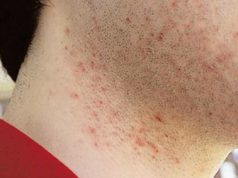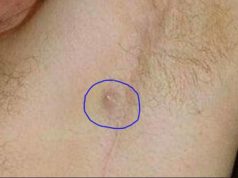If you frequently remove hair from your nose, then you must be familiar Ingrown hair in nose. It is a condition popular in men. Nasal hair has a biological function but sometimes it may grow to a level that you do not fancy thus a need to get rid of it. Considering that your nose is a quite delicate part of your body, it isn’t exactly the best place to have backward growing hairs. Ingrown nose hair can be painful and if not correctly treated, it can result to an infection. Read on to discover more causes, symptoms, pictures and ways to prevent, remove and treatment options.
Ingrown Hair in Nose Symptoms & Causes
Do you need nasal/nostril hair?
Hair in your nose has a very important purpose. Here are some of the biological functions of this hair
It protects you from numerous airborne pathogens by creating a barrier between your respiratory system and the outside world. In fact, one study published in the US National Library of Medicine found that increased nasal hair density decreases development of asthma in those suffering from seasonal rhinitis
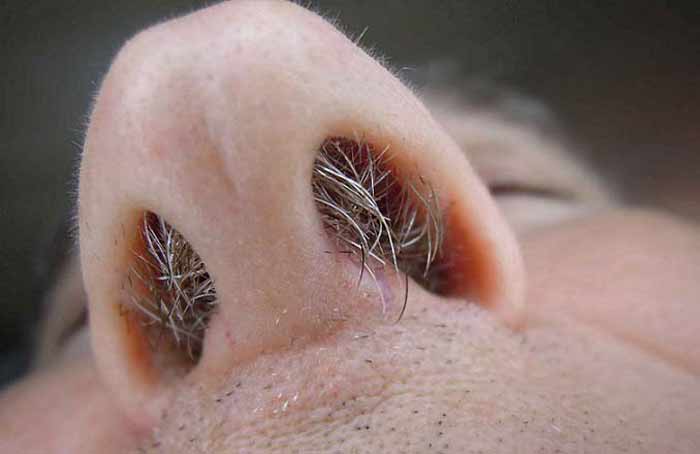
Another biological function of nose hair is to trap moisture.
Nose hair may make you look untidy, especially when it is overgrown but the fact is…you need it. How much do you need? You do not need a bush or a grandpa-like hair coming out of your nostrils. To reap its natural health benefits, little and manageable amount of nose hair is enough.
symptoms-pain, inflammation, pimple
First keep in mind that ingrown nose hair will not necessarily occur within the nose, it can be seen on the outer surface or somewhere under the nose.
Ingrown nose hair can be both painful or without any pain. It is, thus, a bit difficult job to identify an ingrown hair. However, checking a few symptoms will help you do so. This can be either painful or not.
The bump will seem like a pimple, but can be the case of an ingrown hair. The reason this is painful is because unlike normal skin hair nose hair has a thicker structure.
There are also situations when there is pain but the source of pain cannot be located. There is a high probability that this is a case of ingrown nose hair occurring deep inside the nose cavity. On such situations, the best option is to visit a doctor and get it checked.
Other than pain, another symptom that there is an ingrown hair is a pimple, inflammation or reddish bulge. This may be accompanied with itchiness.
If you have a habit of trimming, shaving or tweezing nose hair, it is important that you check ingrown hair growth on a regular basis.
However, putting your finger or any other instrument deep inside the nose cavity is never suggested as this can result in some serious injury to the internal area of the nose. This might even cause bleeding.
Once located, it is important to take careful steps to get rid of the ingrown hair without causing further infection or inflammation. In a short while, you learn some home remedies to get rid of ingrown hair in your nose.
Causes,how it happens Picture
How it happens
Within the nose, under or outside the nose area, ingrown hair happens when hair curls back or grows sideways into the skin. Anyone can suffer from ingrown nasal hair but this condition is most common among people who have coarse or curly hair. It may or may not be accompanied by an infection of the hair follicle (folliculitis) or “razor bumps” (pseudofolliculitis barbae), which vary in size
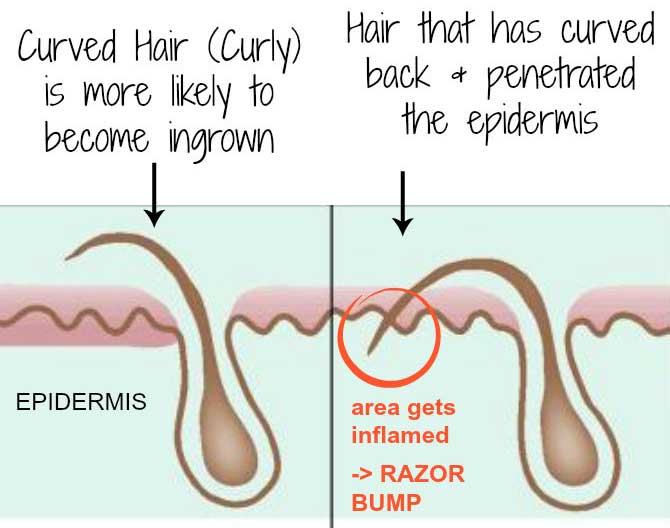
Causes
As far as the causes are concerned, the formation of inward or backward growing hairs in nose is triggered by poor removal techniques. However, as mentioned earlier, individuals with naturally curly and coarse hair especially African-Americans are likely to suffer from this condition.
Apart from the main cause which is improper shaving, there are other causes which include;
- bacterial infection
- viral effusions
- Moreover, nostrils being a small space, debris get accumulated more easily, thus contributing to the growth of ingrown hairs. Often these look like cysts or raised bumps on the skin.
- and many more.
Sometimes, it’s just a symptom of serious underlying diseases. Nostrils being open to the environment, dirt and grime are more likely to clog the pores and as a result of this diseases or infections may develop.
Deep inside the nose, ingrown hairs cause soreness and irritation, but, sometimes it develops raised bumps outside the nose. All of these develop pimple like structure in the nasal tract, which further grow into ingrown hairs.
Pluck Nose Hair Infection- Infected Nose Hair Follicle
Plucking nose hair can lead to a bacterial infection. This infection can worsen ingrown nose hair. If you pluck under the nose (area between your nose and mouth) you are likely to get a little blood lost in there. Blood allows the bacteria in your nose to grow in your nose
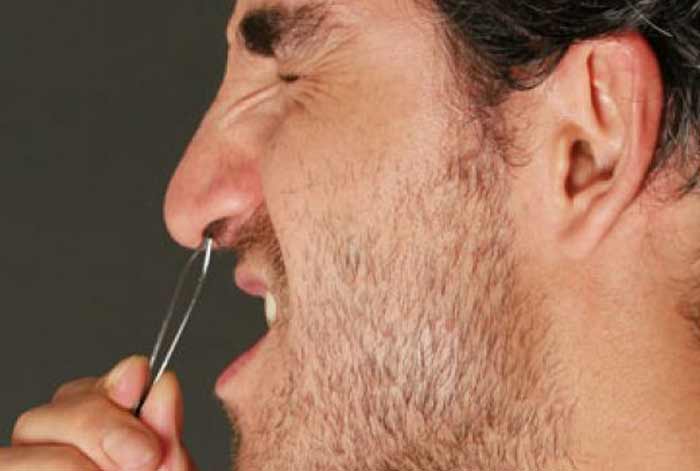
These bacteria can cause infections, such as nasal vestibulitis and nasal furuncles. Nasal vestibulitis is also known as folliculitis. This condition can cause a red, inflamed bump or a collection of red or white bumps, usually at the nostril openings. Staph bacteria (Staphylococcus) are a common cause of folliculitis.
Since veins in the facial area lack protective valves, the bacteria could theoretically enter your bloodstream and lead to infections elsewhere in the body. This phenomenon is commonly referred to as the triangle of death
Ingrown Nose Hair Infection-Pimple Prevention, Removal Remedies
How to prevent ingrown in nose?
Preventing ingrown hair of the nose requires you to keep the nasal tract clean as much as possible.
If you think of pulling out or trimming the hair within this region of your body, it’s important to purchase a sterile, slanted pair of tweezers.
You also need to sterilize the tweezers at your home. How do you sterilize? Simply wash the tweezers with warm water.
Also keep in mind that there are tweezers, which are made exclusively for nose hair removal. Dry it in a well-lit area and use a magnifying mirror.
Still on nose hair removal Real Men Real Style has showcased 6 tips on how to trim nose hair -men’s nasal hair grooming methods nose cleaner tools
Further Reading:
Treatment Options
Usually an ingrown hair in nose heals on its own, but if it does not, clinical intervention is essential. Your doctor may suggest drugs such as retinoids such as tretinoin (Renova, Retin-A, others), to help with clearing dead cells from your skin (exfoliation). This can reduce the thickening and darkening of the skin that often occurs on dark skin prone to ingrown hairs.
There are also creams that will help reduce inflammation. There are also other pills(mostly antibiotics ) and creams that will help control infections
Home remedies
There are some home remedies that have been termed as effective.
Home Remedy 1
- Start with heating water in a clean container. A soft, muslin cloth is required now. Soak it in the warm water and insert it in the nostrils. It will help the affected area to become fermented. Continue with this until the hair follicle softens.
- Apply pressure inside the nostrils with your thumb. Now place your index finger to hold the nostrils with a proper grip. Also press the affected area with the soft cloth soaked in warm water. Now the soft cloth has to be pressed on the affected area in an oscillating motion.
- Most of the time, the softened hair comes out along with the wash cloth. If it comes out, it will be accompanied with pus and mucus. But, sometimes the stubborn hair does not come out. Continue with the fermentation process until the affected area softens and the hair comes out on its own.

Remedy or prevention method 2
With the help of a cotton swab, you can easily get rid of ingrown hair. All it needs is to apply hydrogen peroxide on the affected area. It will soften the affected zone and disinfect it.
Once you are done, it’s important to apply an antibacterial ointment and an antiseptic cream with another cotton swab insides of the affected nostrils. The antiseptic cream will subside the swelling and inflammation inside and also helps the pain to lessen.
Ingrown hair in nose is indeed pesky. It’s tremendously painful and creates a discomfort. Although, in most cases they disappear on their own, some are stubborn thus require attention early enough to avoid infections.

